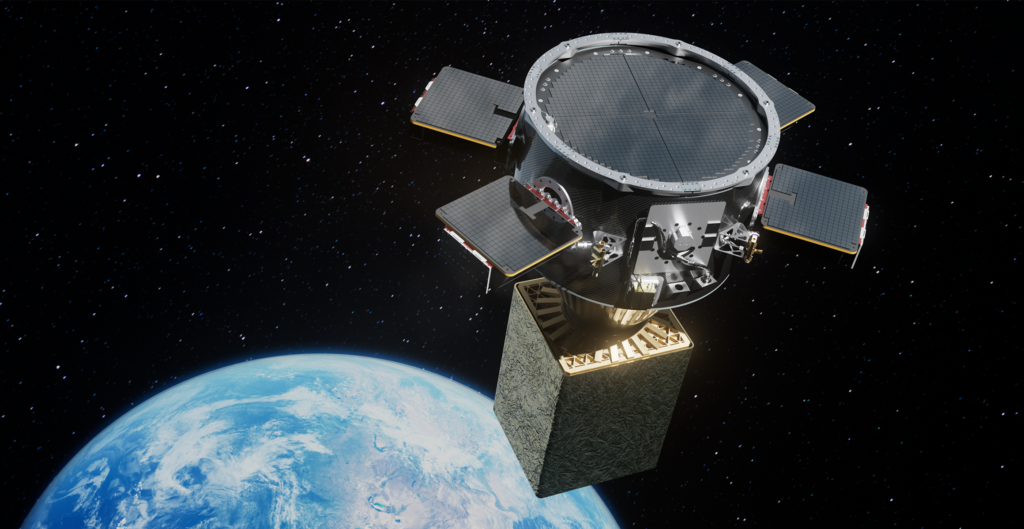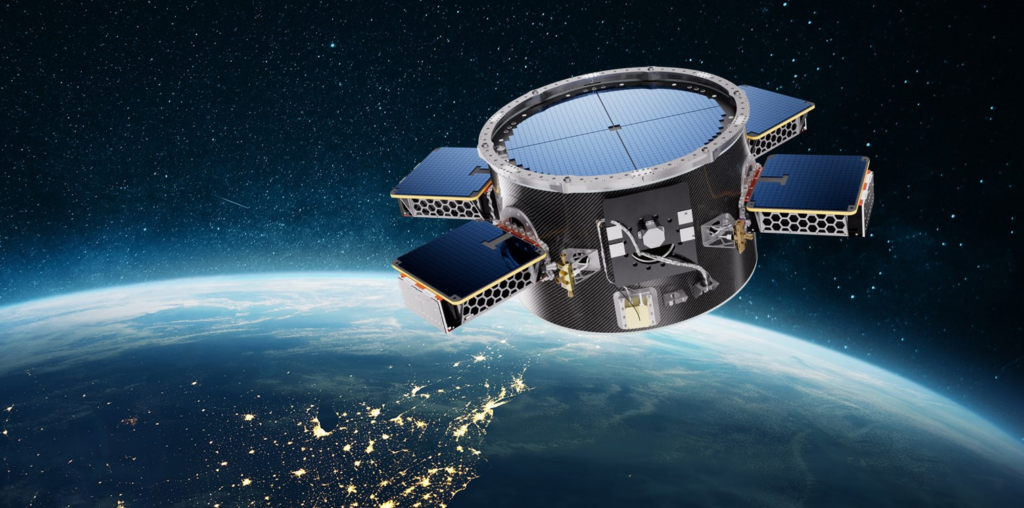
Firefly Aerospace’s New Line of Orbital Vehicles
Small lift launch vehicles play a very important role within the space industry providing smaller payloads access to orbit or even dedicated missions for medium-sized satellites. This being said, smaller rockets are somewhat limited by power and propellant, which can restrict how far they can deploy whatever cargo is on board.
As Firefly Aerospace continues to test and develop the Alpha rocket in preparation for its upcoming missions, they have also been working on extra utility that could change this rocket’s capabilities. Yesterday the company announced a new line of orbital vehicles, each with a mission-specific design and application. In other words, the company is working on unique third stages to combine with Alpha and improve what the rocket can launch and where.
In addition to this news came a new name for the system and a few extra variants. If done successfully, these systems could be very beneficial to the company and make their launch service a lot more appealing. Here I will go more in-depth into these new orbital vehicles, the difference between them, how they could change Alpha’s launch opportunities, and more.
New Update

Yesterday, Firefly Aerospace tweeted saying, “Introducing Elytra: Our line of highly mobile and scalable orbital vehicles. Formerly known as our Space Utility Vehicle, Elytra offers more robust on-orbit solutions, including mobility, hosting, delivery, and servicing across cislunar space and beyond.” As mentioned in the tweet, we had already seen a bit of info on the Space Utility Vehicle however they just changed the name and part of the design/plan.
In a statement, the company said, As the wings of a firefly, Elytra offers on-orbit mobility, hosting, delivery, and servicing across cislunar space and beyond. When launched on Firefly’s small- and medium-lift launch vehicles, it can service the entire lifecycle of government and commercial missions” they said. With this update also came three unique variants. The name of these variants is Dawn, Dusk, and Dark. The Dawn variant supports responsive hosting, rideshare, and delivery missions in low Earth orbit (LEO) and beyond. The lightweight orbital vehicle can be rapidly deployed on the Alpha launch vehicle to meet customers’ urgent mission needs. As an upgraded version, Dusk supports larger, more advanced on-orbit missions from low Earth orbit (LEO) to geosynchronous orbit (GEO). With enhanced maneuverability, power, and autonomy, the intelligent platform offers responsive on-orbit tasking, such as relocation, space domain awareness, and deorbiting services.
Finally, there is Dark, which is designed to serve as persistent orbital infrastructure in support of a wide variety of missions from LEO to lunar orbit and beyond. Multiple Dark vehicles can be coordinated for more advanced space domain awareness and on-orbit servicing. The autonomous vehicles are ruggedized to support interplanetary transfers and deployments across extreme environments. An iteration of this hardware will serve as the transfer vehicle for Blue Ghost Mission 2, enabling additional customer opportunities for lunar orbit delivery and operations.
“Elytra further expands Firefly’s on-orbit services by opening access to more orbits, extending the life of each mission, and providing deorbiting services to help minimize space debris,” said Bill Weber, CEO of Firefly Aerospace. “Our robust vehicle line gives us a unique advantage to quickly launch, deploy, and service satellites on-orbit in response to dynamic changes in space” he said. Designed, manufactured, and tested in-house, it utilizes flight-proven hardware flown on Firefly’s Alpha vehicle and qualified systems common to Firefly’s Blue Ghost lunar lander, including the carbon composite structures, core avionics, and propulsion systems. It also utilizes the on-orbit heritage and learnings from Spaceflight’s Sherpa vehicle following Firefly’s recent acquisition of the company.
While unique to Firefly, we have seen a similar system work out very well for Rocket Lab. In that case the company has two third stage options, the kick stage and Photon. The Kick Stage is designed to deliver small satellites to precise and unique orbits, whether flying as dedicated or rideshare on Electron. By now, the Kick Stage has successfully deployed multiple satellites flying as rideshare payloads to different orbits on the same mission. This comes in addition to other benefits like deorbiting satellites and more.
Rocket Lab also has an upgraded version of this hardware named Photon. Photon is based on the heritage Electron launch vehicle Kick Stage, leveraging numerous components that have significant flight heritage. Photon flies as the upper stage of Electron, eliminating the parasitic mass of deployed spacecraft and enabling full utilization of the fairing. By now this hardware has allowed Rocket Lab to send payloads to the Moon using only the Electron rocket.
Third Stage Mission

In addition to news about the updated third stage design, the company also announced an upcoming mission with this hardware. Specifically, they announced a new agreement with an innovative space logistics company, to conduct a responsive space mission with Firefly’s orbital vehicle, and their small satellite dispenser, FANTM-RiDE. Scheduled to launch in 2024, the mission supports a follow-on study contract with the National Reconnaissance Office (NRO) to demonstrate FANTM-RiDE’s rapid payload reconfiguration capabilities prior to launching on Firefly’s Alpha vehicle and performing multiple responsive on-orbit deployments on Elytra.
Upon launching on Alpha, Firefly’s new vehicle will utilize the payload’s dispenser to first deploy commercial rideshare payloads in Sun-Synchronous Orbit, and then perform an on-orbit maneuver and stand ready to deploy U.S. government payloads on-demand. “Responsive delivery of space capabilities to orbit needs a paradigm shift, and we are excited to demonstrate two of FANTM-RiDE’s game-changing capabilities that enable responsive space,” said dan Lim, President and CEO of the company. “FANTM-RiDE not only enables rapid launch with its Rapid Rideshare Reconfiguration (R3) capability that eliminates slow and costly analytical barriers to fast payload hot-swaps, but it also enables on-orbit pre-positioning of payloads already stored on orbit for quick deployment on demand.”
The company’s Flight Agnostic Non-interfering, Tunable Mass Rideshare Dispenser Equipment (FANTM-RiDE) enables customers to add, replace, or remove payloads from a manifest within hours before launching without invalidating existing mission loads analyses. With a predetermined common interface, FANTM-RiDE also enables entire loaded dispensers to be quickly interchanged between launch vehicles. FANTM-RiDE further protects multiple payloads on-orbit within a container that can open and close on-demand.
“Firefly is honored to support this critical mission that will further advance our nation’s responsive space capabilities and debut Firefly’s vehicle that’s filling a void in the on-orbit servicing market,” said Bill Weber, CEO of Firefly Aerospace. “As the first of many missions utilizing multiple Firefly vehicles, this operation will lay the groundwork for Firefly’s end-to-end mission services, proving our capabilities to rapidly launch, maneuver, and deploy satellites at a time and place of our customers’ choosing.” As Firefly’s second responsive space operation, the mission offers additional rideshare opportunities for commercial customers. Firefly is currently working to complete the final readiness milestones for its first responsive space mission for the U.S. Space Force before entering the stand-by phase and waiting for the 24-hour launch notice.
Late last year, Firefly was selected by The U.S. Space Force’s (USSF) Space Systems Command (SSC) to provide launch services for SSC’s VICTUS NOX mission. The VICTUS NOX mission will demonstrate an end-to-end Tactically Responsive Space capability, including the launch segment, space segment, ground segment, and on-orbit operations. VICTUS NOX will perform a Space Domain Awareness (SDA) mission from Low-Earth Orbit (LEO). The award came after Firefly’s second orbital flight. Alpha Flight 2 mission launched from Vandenberg Space Force Base on October 1st. The company is also preparing for their upcoming Alpha Flight 3 mission currently being integrated to carry the NASA VCLS Demo 2 payload.
In this case, all the way back in 2020 the company announced they had been selected by NASA for the launch of Mission Two of the Venture Class Launch Service Demonstration 2 (VCLS Demo 2) contract. Mission Two involves launch of two CubeSat constellations to a 550 km Sun-Synchronous Orbit, separated by a minimum of 10 degrees in plane change. At the time the company president said, “Firefly is pleased to have been selected by NASA for this operationally challenging mission. We applaud NASA’s commitment to the nation’s emerging small launch industrial base and look forward to supporting America’s civil space launch needs for many years. The men and women of Firefly and our supply chain partners are excited by this partnership with NASA.”
Conclusion
Firefly Aerospace just announced a host of new information relating to its new set of orbital vehicles. With three versions, Firefly and its customers now have a wide range of options when launching Alpha. We will have to wait and see how it progresses and the impact it has on the space industry.
